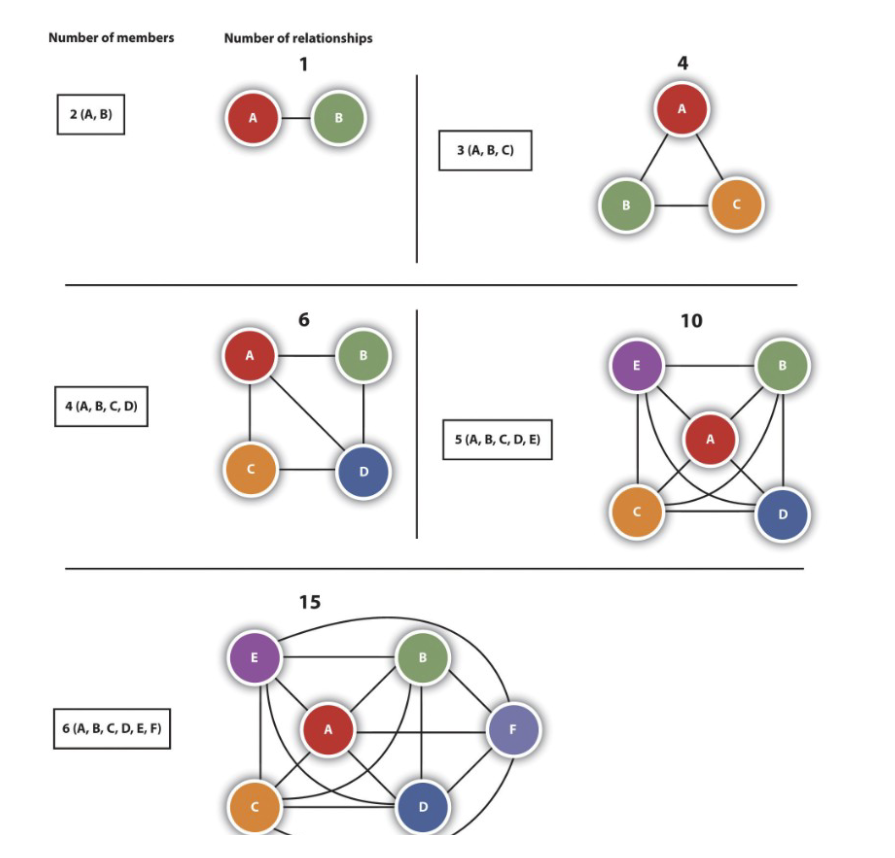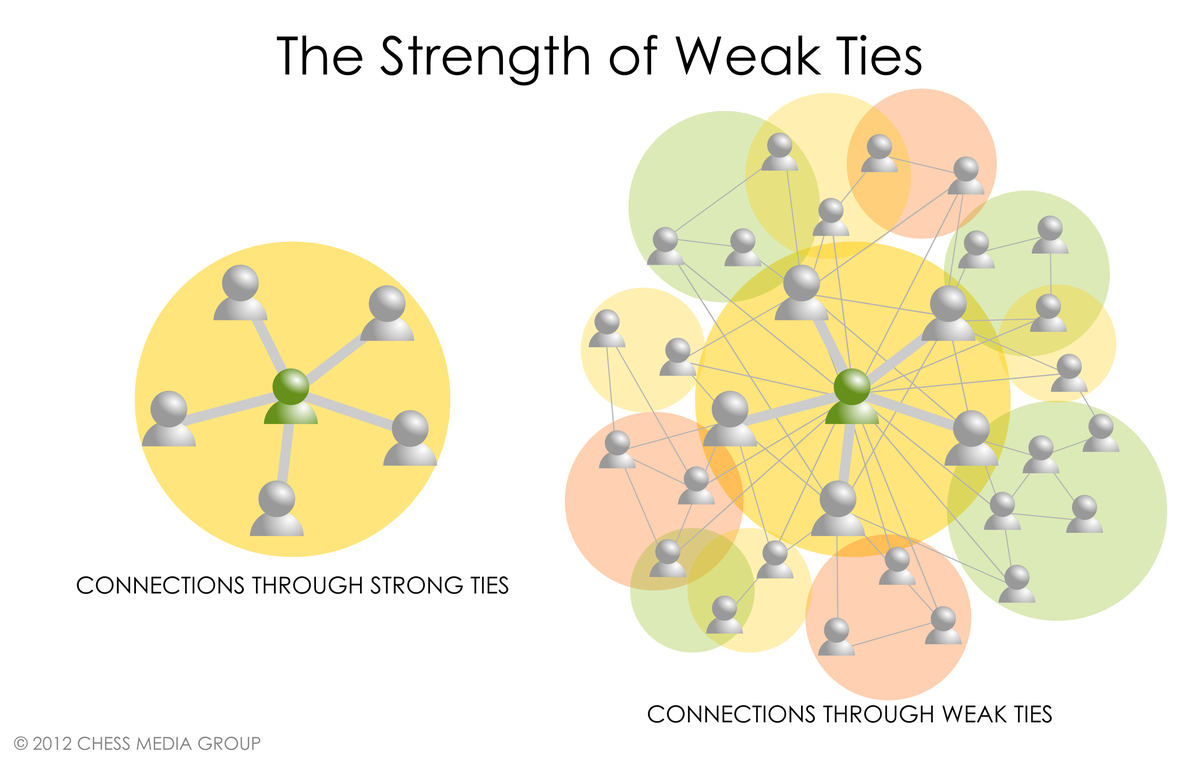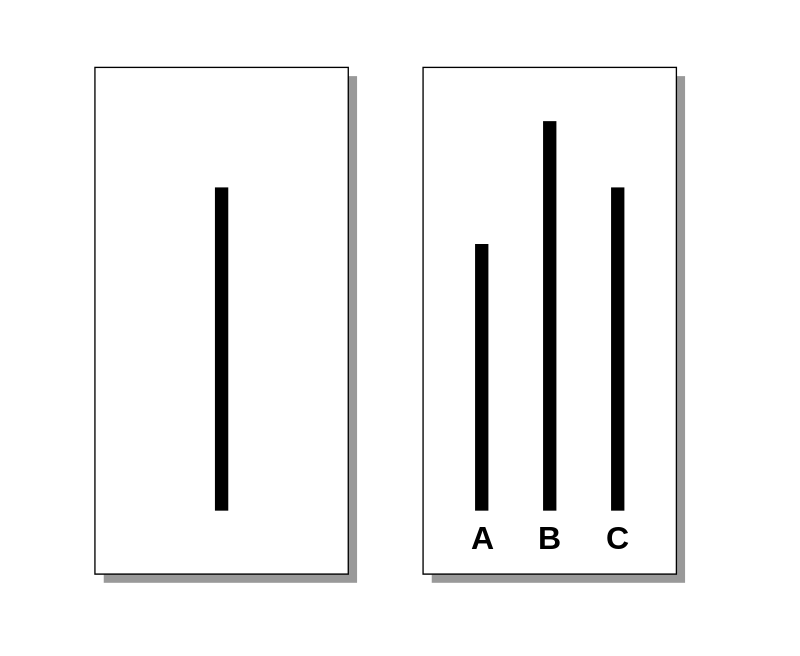#Sociology
- Social groups form the building blocks for society and most social interaction
- The sociologist Georg Simmel argued that the key element in determining the form of social relations in a group is the size of the group
- Emphasized dyad (group of two) and a triad (group of three)
- The dyad is the most intimate form of social group because the two members are mutually dependent on each other
- However, it is also one of the most unstable. If one member leaves the group, the group ceases to exist
- When a third person joins a dyad to form a triad that person can fill the role of
- mediator, the conflict resolver
- tertius gaudens (a rejoicing third), the person who profits from disagreement from the others
- divide et impera (divide and conquer), the person who purposefully breaks up the other two

- As group size increases, number of relationships in the group increases
- Georg Simmel
- Small groups: face to face
- Parties: multifocal
- Large groups: formal
- No clear boundaries or numbers associated, its more about the dynamics of the groups
- The larger the group the more attention you can get as a group
- But also, the larger the group the more conflict there is
- C. H. Cooley
- Primary Groups
- Provide strong emotional support (or distress) and social identity, endures over time
- For example, your friend group or your family
- Secondary Groups
- More impersonal and exist often for a shorter time to achieve a specific purpose
- For example, a class of students
- Reference Group
- Groups of people we do not know directly but they set a standard for guiding our own behavior and attitudes
- Social Networks
- A set of dyads held together by ties is called a social network
- Ties are social connections
- A tie is a set of stories that explains our relationship to the other members of our network
- Sounds complicated, its really not. Who is this person to you? Oh they are my roommates ex girlfriend. That’s the story explaining your tie to that person.
- Ties range in quality from weak to strong
- Embeddedness refers to the degree to which social relationships are reinforced through indirect paths within a social network
- The more embedded a tie is, the stronger it is
- How strongly ingrained are you into a social network?
- You know your sister, but through your sister you know your brother in law, and through them you know his friends and his coworkers
- Strong ties are good to have, but weak ties can help more sometimes
- Weak ties can provide new opportunities and information
- For example, you might get a job through your spouse’s friend because they don’t directly know you and have other contacts that your spouse doesn’t. Your spouse would likely have many of the same contacts you would. Their contacts are your contacts. Hopefully that makes sense :)

- A structural hole is a gap between network clusters (or even between two people) that would benefit form having the gap closed
- People whose networks span structural holes have early access to diverse, often contradictory, information
- Social Capital
- Social Capital - The social knowledge and connections that enable people to accomplish their goals and extend their influence
- Social knowledge - Understanding of your community or social circle’s norms
- Connections - Networks, reciprocity, cooperation and trust
- Who you know is often as important as what you now.
- We are susceptible to what is either real or imagined social pressure to conform
- We want to gain acceptance and approval (positive sanctions) and avoid rejection and disapproval (negative sanctions)
- Solomon Asch: How easily conformity occurs in an unambiguous situation?
- People were asked to pick the line that matches. However, only one person wasn’t in on the experiment. The rest were told to pick wrong answers and the last person would usually join in the wrong answer despite knowing it’s wrong.

- Most people would say C obviously matches, but when the rest of the group says the wrong answer, you were also more likely to go along and say the same wrong answer
- The size of the group increased conformity
- The presence of another dissenter decreases conformity, e.g. if someone else picks the answer you would then you are also more willing to pick the right answer
- The greater the privacy the less conformity


